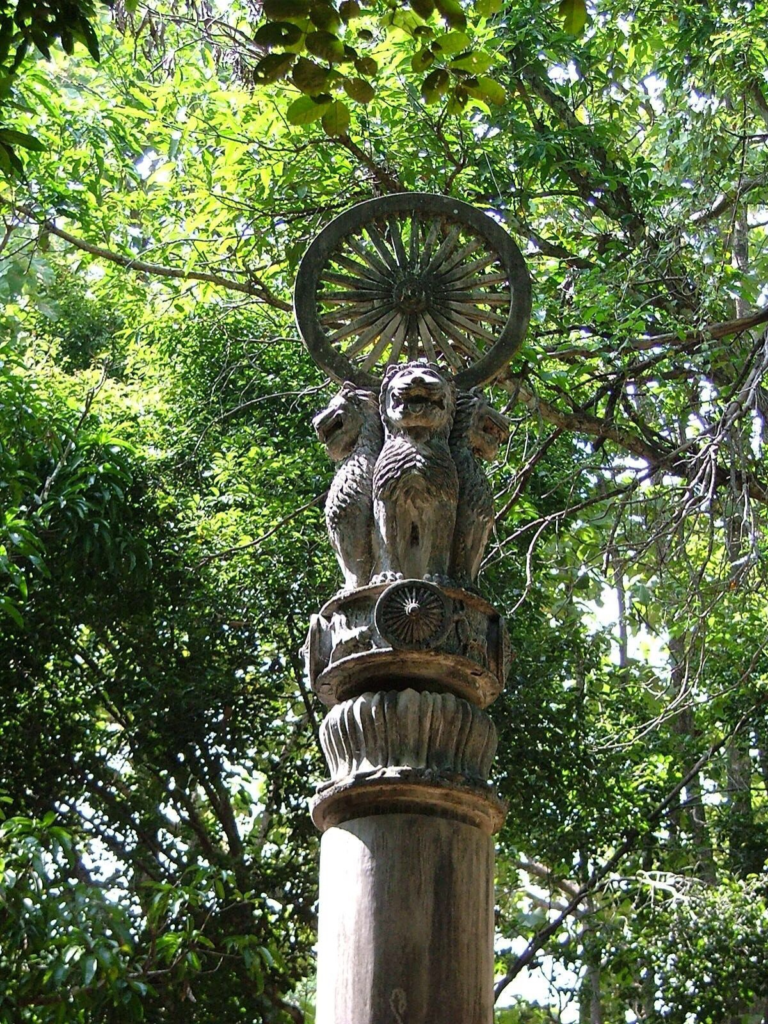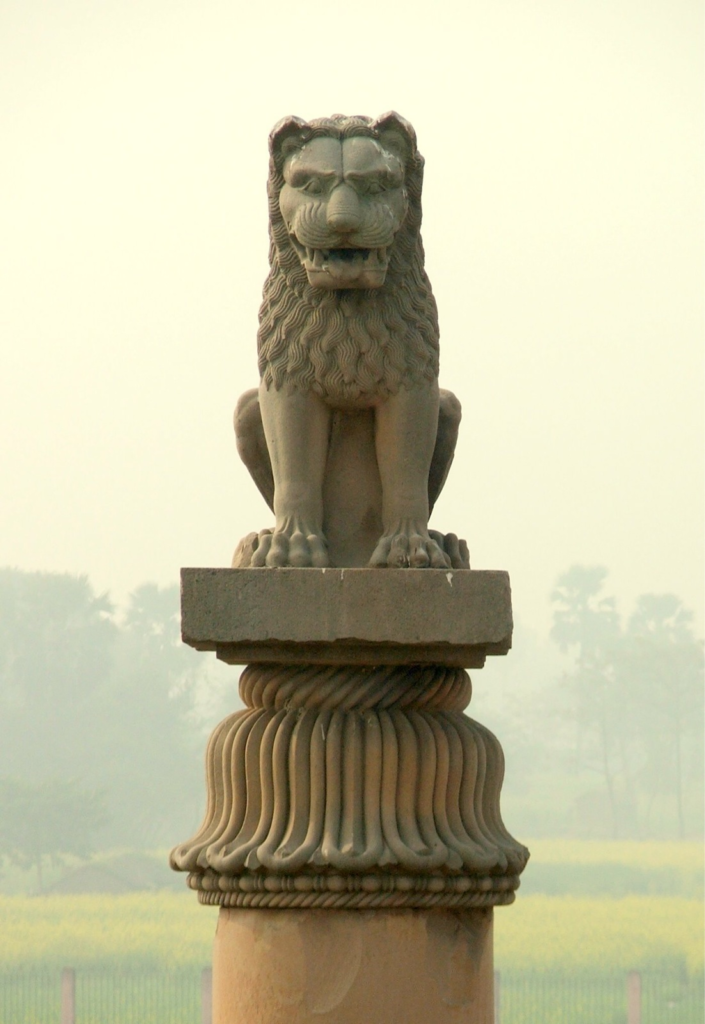Table of Contents
Mauryan Sculpture
This article deals with topic titled ‘Mauryan Sculpture .’ This is part of our series on ‘Culture’ . For more articles , you can click here
Introduction
- Dr.Ananda Coomarswamy differentiated Mauryan sculpture to
| Court Art | Palaces, Pillars & their capitals |
| Popular Art | Yakshas & Yakshinis, Pottery. |
- Maurayan Empire has great role in promoting Indian Sculpture.
- Why Maurayans were Patronisers of Art & Architecture
- Maurayans gave secured borders to India and in times of peace, art and architecture saw phenomenal growth.
- Other reason was that because of such a huge area under control and surplus revenue, emperors could easily patronise art
- Role of religion was also there. Pillars to spread message of Ashoka’s Dhamma & along with this, Stupas & Monastries came up due to spread of Buddhism.
- From Utilitarian Art of Indus Valley Civilization , in Maurayan Period it became Court Art.
- Uniformity in styles of pillar capital tells us that craftsmen were from same region
Influence on Mauryan Art
Mainly influenced by two things
| Religious influence | – Buddhism became most popular social & religious movement – Concept of religious sculpture prominent |
| Foreign Influence | – First three Mauryan emperors Chandragupta,Bindusara & Ashoka known to have friendly relations with Hellenistic west and Achaemenids of Iran – Adaptation of Achaemenids seen in Edicts & imperial palace of Pataliputra |
Court art
It mainly consist of Edits and Pillars made by the royal court on the direct orders of king himself.

General Outline
Consist of
- Shaft : Monolithic & Freestanding
- Bell/Lotus Base : Act as Joint between pillar & capital
- Drum : On bell base. Can be rectangular, square or circular
- Capital : Placed on Drum eg Lion, Bull, 4 headed Lion etc.
General Features of Ashokan Pillars
- Inscriptions on Stone ie Ashoka’s Message to his
subjects
- In middle of Pillars . If seen with bare eyes, these inscriptions cant be read properly. That is the reason , why Dhamma Mahamatras were there in Ashokan Period who periodically visited these places and read out the message of Emperor to people.
- Mostly written in Brahmi Script and Pali or Prakrit Language. In North West , Greek language and Aramaic script was used.
- Important to note that any Pillars don’t mention Ashoka but Devnampriya Priyadarshi
- Monolithic & free standing structures (ie without support)
- All the Ashokan Pillars are carved out of single stone with no breaks
- They are not supported with any material
- Prof Jaiswal of BHU argues that many a times, these arent monolithic but joined and polished from above so that joints arent visible . Nevertheless most of them are monolithic.
- Use of Chunar Sandstone
- Chunar is place in Mirzapur district & there are naturally existing mines of Sandstones there.
- All the pillars were mined out of that place and transported to different places.
- Polished surface
- Surface of these Pillars is very shiny and archeologists called it Polish
- Actually it is mixture of animal fat with lime, gypsum and sandstone .
- Animal capitals
- Every pillar has capital made of same stone
- Transportation Technique
- Since these pillars are massive structure several feet in height and very heavy. In those days, transportation was not that effective as that of modern time
- Inland navigation was used for this. River Ganga was used extensively. This is the reason that most of these pillars are found in Ganga Valley.
- They are placed either to mark a sacred site associated with Buddha’s life or to commemorate a great event. On many of these pillars are inscribed the famous edicts of Ashoka propagating the Dhamma (laws of the Buddha) or the imperial sermons of Ashoka to his people.
- Some were of spotted red and white sandstone from the region of Mathura, the others of buff colored fine grained hard sandstone usually with small black spots quarried in Chunar near Varanasi.The uniformity of style in the pillar capital suggests that they were all sculpted by the craftsmen from the same region.
Various Pillars
1 . Lion Capital

| Place | Sarnath (now our national symbol without crowning wheel) Note : there is one Lion capital similar to this at Sanchi too but that is not our national symbol because in it’s drum base is different |
| Components | For all these are same 5 in number (now only 4 remains) |
| 1.shaft | Broken into many parts now |
| 2.Bell base | Artistic beauty and act as joint between pillar and capital |
| 3.Drum on Bell Base | Circular in shape Has drum shape with 4 animals -elephant,horse,bull &lion |
| 4Lions | – 4 voluminous roaring lion figures back to back – Indicate spread of dharma in all direction – Reminiscent of Persian tradition |
| 5.crowning Element | – Dhammachakra, a large wheel – Lions originally supported this and it is important symbol of cosmic order; in Buddhism it represents Dhammachakraparivartan (first sermon by Buddha) – This wheel is lying in broken condition &displayed in museum |
2. Pillar at Vaishali

| How different | Only one lion capital |
| Direction of lions face | North |
| Why north | Direction buddha took on his last voyage |
| Location of pillar | Contiguous to site of monastery |
3. Allahabad pillar

- First erected at Kausambhi (30km from Allahabad) capital of Koshala Kingdom
- Located inside Allahabad fort now
- Earlier inscriptions from Ashoka (Brahmi Language dated around 232 BC)
- Later inscriptions attributed to Samundragupta & Jahangir
- Too has single lion capital
4. Lauriya-Nandangarh

| Location | 23km from Bettiah in West Champaran,Bihar |
| Feature | – Single lion capital – Hump and hind legs of lion go beyond abacus |
5. Lauriya-Areraj

| Location | East Champaran , Bihar |
| Speciality | Devoid of any capital |
6. Rampurva
- Bull Capital in Rampurva ( Bihar)
- Presently, it is in Rashtrapati Bhavan

Comparison with Persian Pillars
- Most of the Colonist/Imperialist Historians gave theory that Indian Art was highly influenced by foreign Art & Ashokan Pillars were simply a copy of the Pillars of Persian Empire of Darius I because they wanted to show that Indians weren’t capable of such artistic endeavors .
- Yes, these two types of pillars are of same period and ideas do match but we cant say that one is the simple copy of other. Idea of these pillars was very much prevalent in Persia & India both of which came in same cultural zone in those time but developed in both places with local artistic craftsmanship. It cant be said that one copied from other.
Popular Art of Mauryans
1 . Yaksha & Yakshini

| Yaksha | Nature spirits usually benevolent also known as fertility spirits |
| Yakshini | Female counterpart of male yaksha |
- Both attend to Kubera ,hindu god of wealth who rules mythical Himalayan kingdom-Alaka
- They were deities of common people (ie symbolize common belief of people) but gradually other religions took them into their fold
- Both caretaker of natural treasures
- Have prominent place in Hindu, Jain & Buddhist literature
- Most common element- polished surface & clear physiognomic details
2. Didarganj Yakshini
| Place | – Didarganj (Bihar) – In Patna museum presently. |
| Material | Sandstone with polished surface ,reflecting sophistication in treatment |
| Features | – Tall, well built, well proportioned, free standing sculpture – Yakshini holds chauri (flywheel) in right hand & left hand is broken – Shows sculptures sensitivity towards round muscular female human body- folds of muscles are properly rendered & tightening of garment around belly creates effect of bulging belly. – Lower garment has been rendered with great care. Each fold of garment on legs is shown by protruding lines clinging to legs ,which create transparent effect – Heaviness of torso is depicted by heavy breasts and impressive back |

3. Elephant Sculpture
| Place | – Dhauli near Bhubneshwar – There is rock-cut elephant above the Edicts which is the earliest Buddhist sculpture of Odisha. |
| Features | – Represent fore-part of elephant carved over edicts of Ashoka – Different from animal figures surmounting pillar capitals – Fine delineation of bulky volume & living flesh, natural to that animal along with dignified movement and linear rhythm that has no parallel |

4. Facades of Lomus Rishi cave
| Place | Rock cut cave of Lomus rishi in Barabar Hills near Gaya,Bihar |
| Feature | Decorated with semicircular chaitya arch at entrance resembling that of wood work |
| Patronage | By Ashoka for Ajivika sect |

5. Pottery
- Pottery is known as Northern Black Pottery Ware (NBPW)
- Black color was used
- Highly lustrous polish was used
- It was a Luxury ware showing maturity
- it shows highest level of pottery making
- Was considered precious item => because archaeologists found broken NBPW pottery that was repaired
